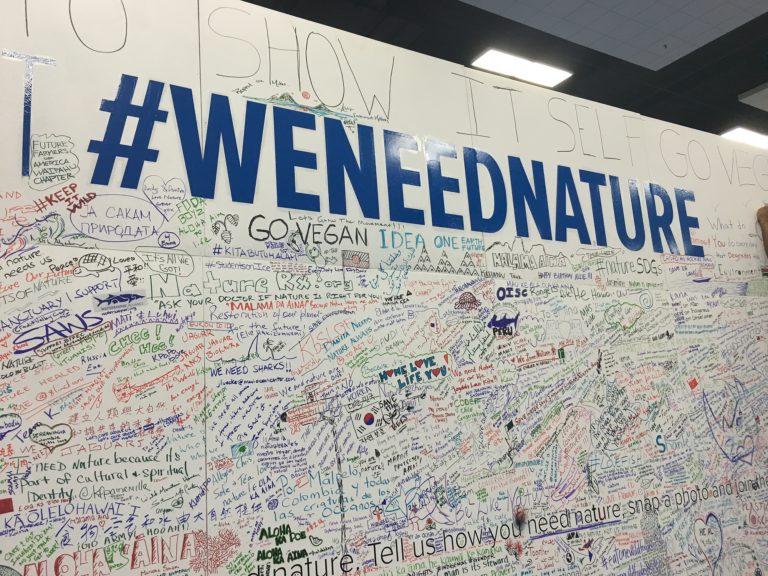
From September 1 to 10, 2016, more than 6,000 people from around the world – representing non-profits, indigenous groups, government, academia, and more – convened in Honolulu, Hawai’i for the International Union for the Conservation of Nature’s (IUCN’s) World Congress. It was the first time IUCN held its once every four years Congress – the olympics of conservation – in the United States since IUCN started in 1948. The Congress was held in Hawai’i at the invitation of US President Obama.
The Waterkeeper movement was well-represented at the Congress. There were Waterkeepers and their board members, prospective Waterkeepers, and Waterkeeper Alliance staff from Chile, China, Mexico, Peru, and the United States, including a group of powerful advocates who are working to create the first Waterkeeper in Hawai’i. The team is excited to develop a Waterkeeper to protect this paradise mauka to makai (mountains to the sea) – to protect the Wai (freshwater) and the Kai (salt water/ocean).
With so many IUCN attendees, along with hundreds of workshops, there was a palpable sense of optimism and energy amidst the measured chaos. Like the theme of the Congress, attendees recognized the planet is at a crossroads; the question remains whether we can step on the fossil fuel free gas pedal quickly enough to save ourselves. One part of the answer that is clear is that the grassroots will lead the way.
As part of that grassroots solution, our Waterkeeper team attended the Congress to share a story about people who push boundaries and challenge the status quo – a story about the power of citizen action and innovation. We told a story about how citizens can see a problem and then rise up to answer the question, “What can I do?” In other words, we told them the story of the Waterkeeper movement from its roots on the Hudson to its present day global expanse.
We were thrilled to know there are others who also answer the call of “what can I do?” like our friends at Hokule’a. Last year, Hokule’a began a three-year journey to draw attention to the effects of climate change. The 13-person crew worked without modern navigational equipment and instead used wayfinding, a traditional navigational technique that relies on gauging the position of the sun, moon and stars, taking into account variations in ocean currents and wave patterns and even the behavior of fish and birds. The canoe was built in 1975 by the Polynesian Voyaging Society to promote Hawaiian indigenous culture, in particular the voyaging and navigational traditions that brought Polynesian settlers to the Hawaiian archipelago.
I had the good fortune of visiting with them in June and I learned about their mission to Malama Honua (take care of the earth) as they sail around the world. With that visit, I was reminded of the work our Waterkeepers are doing on their waterways worldwide. This small, but determined group of people had created a movement, and they were traveling the world to share that movement and teach people how to live in balance with our earth.
It will take an organized movement of champions like Waterkeepers, Hokule’a, and others to ensure there is an opportunity for an IUCN Congress in 2048 – 100 years after IUCN was created.